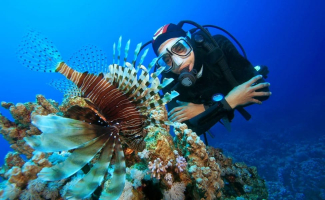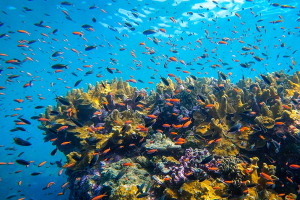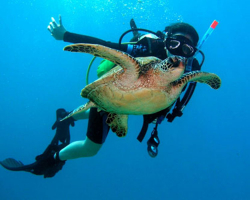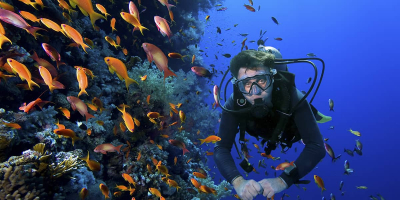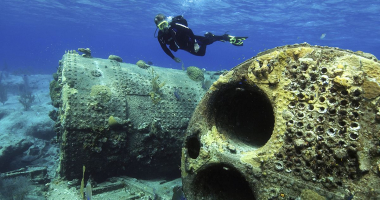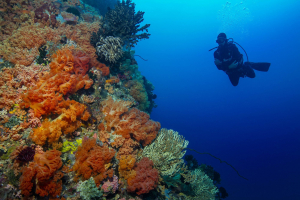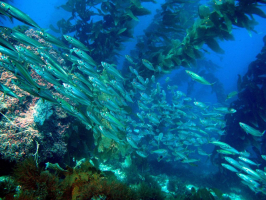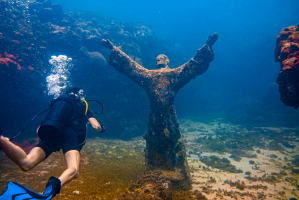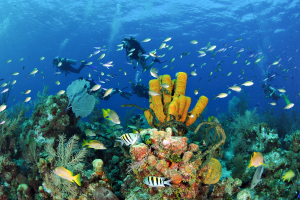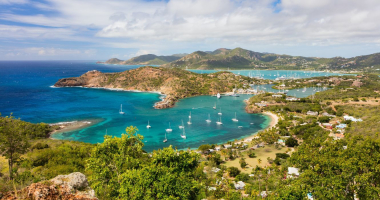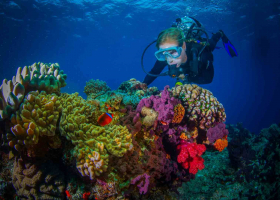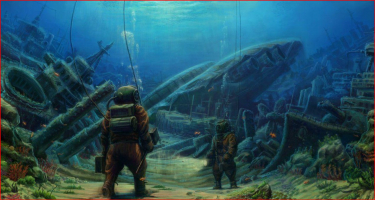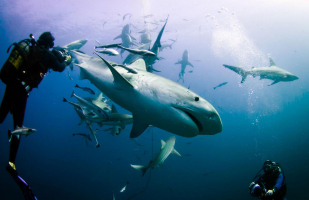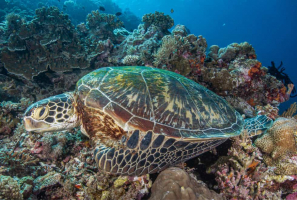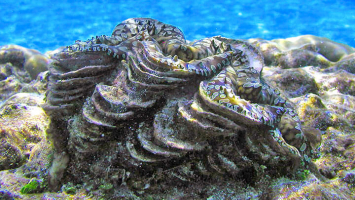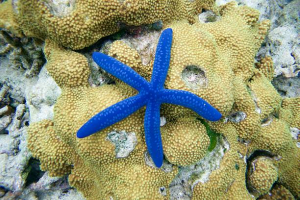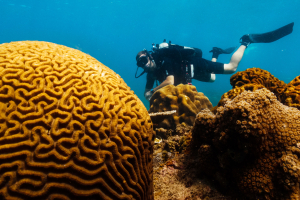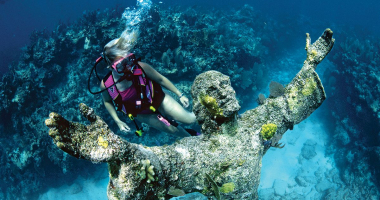Top 10 Greatest Dive Spots in France
The most attractive diving locations in France are found along the French coastline, which stretches for over 5400 kilometers and includes sandy beaches, ... read more...marshes, and mud flats, as well as rocky shores. Between the clarity of the Mediterranean, the numerous historical and contemporary shipwrecks, the huge networks of caverns, dry, drop-off, or tiny ice dips, diving in France offers many options. Finding a dive site in France or booking a dive center in France is very simple, but let's take a look at the greatest dive sites in France together.
-
Do you want to go diving in France at a trendy dive site? Divers love the Glénan archipelago, which is located in the Finistère region. The wild character of these isolated islands, which are designated as a natural reserve, entices visitors. The granite coast of Glénan is exposed to strong winds, tides, and currents and it is among the greatest dive sites in France. The splendor of the blue waters with opal reflections, on the other hand, makes the water appear to be a true tropical oasis. There is a diverse marine fauna and vegetation beneath the surface. Crustaceans and other invertebrates abound in the cracks of rocks, but it's not uncommon to catch them off guard on their forays.
The huge kelp vegetation gives divers the strange sense of swimming in a buried jungle. But the magic doesn't end there; the Glénan islands are also home to several massive wrecks, such the 140-meter-long Italian freight ship The Pietro Orsoleo. You will see that the Glénan islands have some of France's most spectacular dive locations.
- Location: Finistere
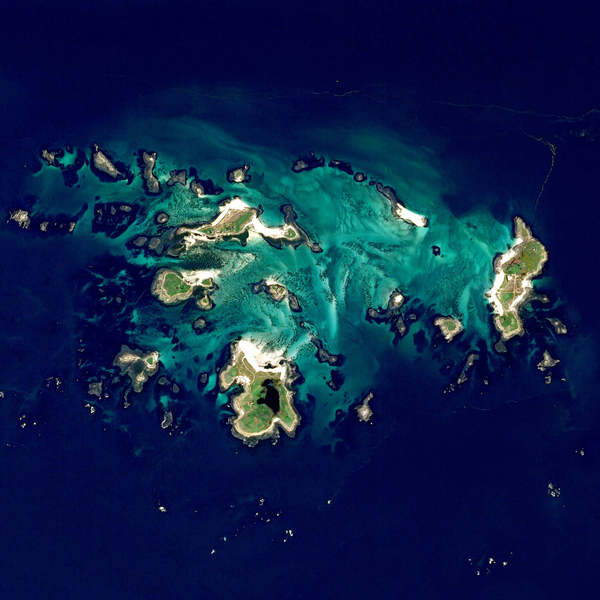
https://www.getrevue.co/ 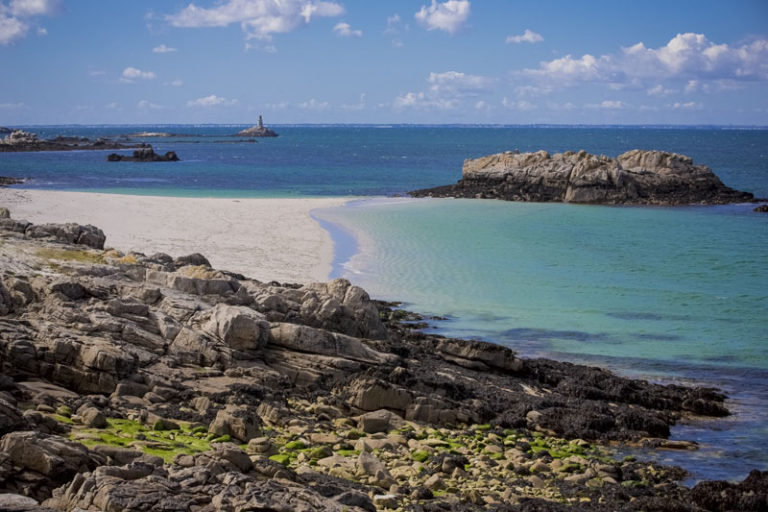
https://www.le-cabellou-plage.com/ -
Limiting your scuba diving in Finistère to the Glénan islands would be an inexcusable mistake, as Brittany's waters are home to some of France's best dive sites. Between Brest and Conquet, the shoreline offers spectacular reliefs with a variety of scree drop-offs, fractures, and caverns.
The principal species of the Atlantic Ocean, such as lobsters, crabs, pout, bars, and congress, are likely to be found on these diving spots. The wrecks, which are many, attract many divers interested in history. The old ship Dellec, sunk during WWII, is without a doubt the most stunning wreck. The Émile Allard wreck is also a popular diving destination.
- Location: Finistere
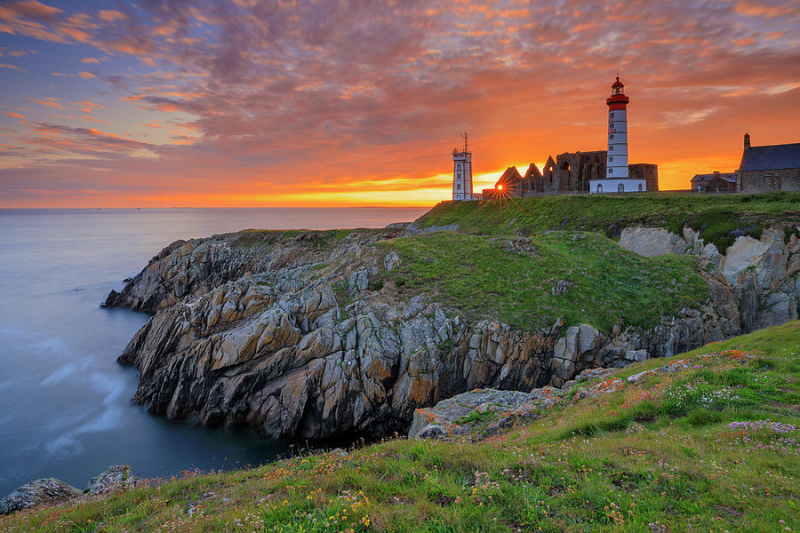
https://fineartamerica.com -
If you want to learn to dive in France, this 85-square-kilometer island in the choppy seas of the Atlantic Ocean is a great place to start. At an average altitude of 40 meters, Brittany's largest island overlooks the sea. The island's rocks are made up of a friable rock consisting largely of shale that has been heavily eroded by the water, giving it a jagged appearance. Water has also carved strange landscapes on the seabed, including a jumble of caverns, fissures, canyons, and tunnels of all types.
The area's colorful flora colonized the rocks, giving it the appearance of a tropical garden! Fish eagerly wait for dusk to hunt in the various spaces. Lobsters, crabs, and other crustaceans, among other aquatic species, live in these fissures. Finally, the trawler Philippe Eric and the Hanan, both lovely wrecks off the shore of Belle-Ile, should be noted.
- Location: Morbihan
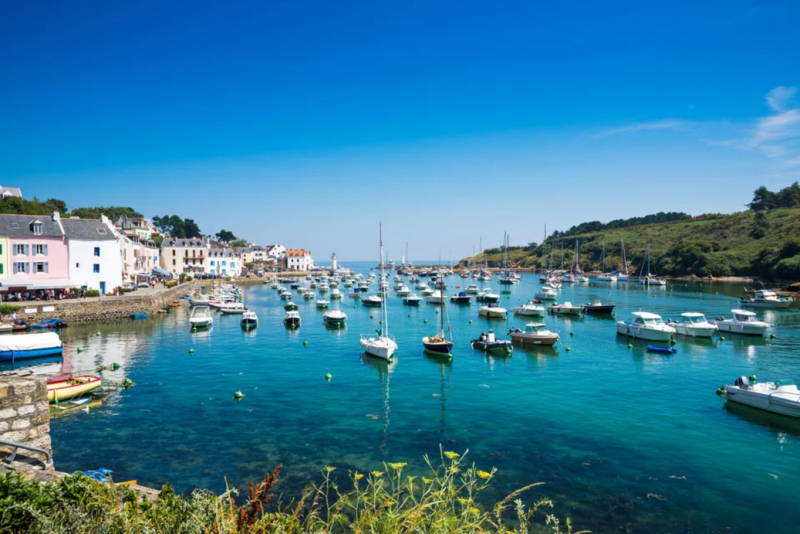
https://www.reddit.com/ -
Normandy is another fantastic diving site in France. Hundreds of historic shipwrecks lurk in the dark and chilly waters of the Atlantic Ocean, including many from the famed Allied landings of WWII. Others are the result of a shipwreck that sank on the region's rocky shores. The D-Day Museum at Port en Bessin is a fantastic resource for wreck hunters. Because of their outstanding preservation, abundant aquatic life, and the opportunity to step inside their intestines, the Empire Broadsword, the USS Meredith III, the Fort Norfolk, and the Courbet are the most popular among divers.
You'll see all of the Channel's marine life, including lobsters, sea spiders, congresses, and bars. Also keep in mind that most wrecks are accessible to beginners as long as they stay within the depth limits set by their certificates. The wreck's typical depth is usually between 12 and 25 meters. Dives on these wrecks are available from a number of diving shops in France.
- Location: Normandy
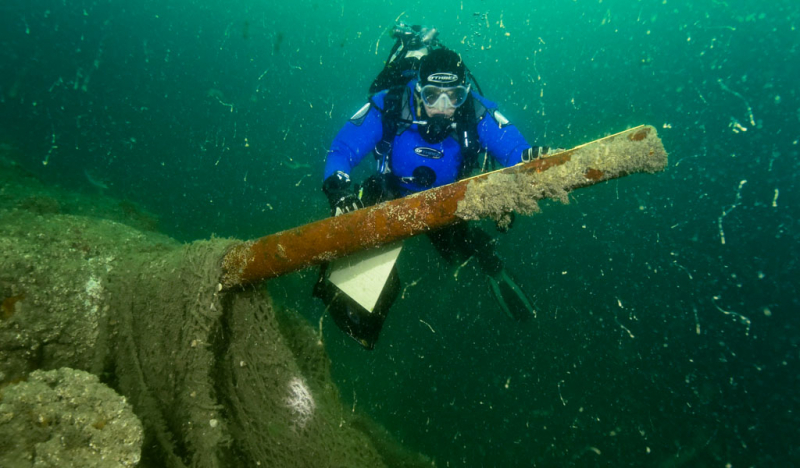
https://www.bsac.com/ 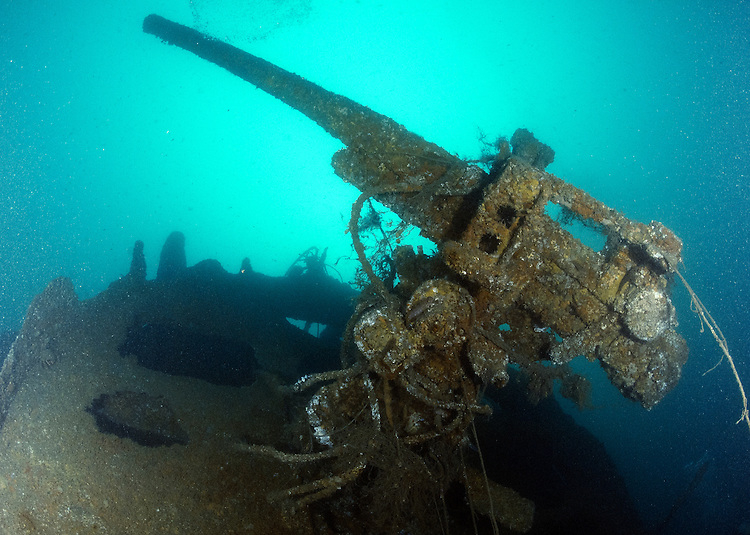
http://stevejones.photoshelter.com -
It's not about finding the best dive sites in France, but about having a fantastic time. Who hasn't fantasized of looking in the mirror and seeing the lovely show of light that passes through it? Good news: ice diving is becoming more popular, and it is becoming more accessible, especially in Tignes.
Dive shops have lately opened around Savoie in France to provide this one-of-a-kind experience. Ice diving, of course, necessitates special diving equipment that is suited to the cold, so you won't be diving with a wetsuit or a tiny mask. This is an excellent opportunity to learn to dive in a dry suit, which introduces several buoyancy concepts. After equipping yourself, you enter a hole dug in the ice to explore this cosmos. You'll see that the magic happens from there...
- Location: Savoie
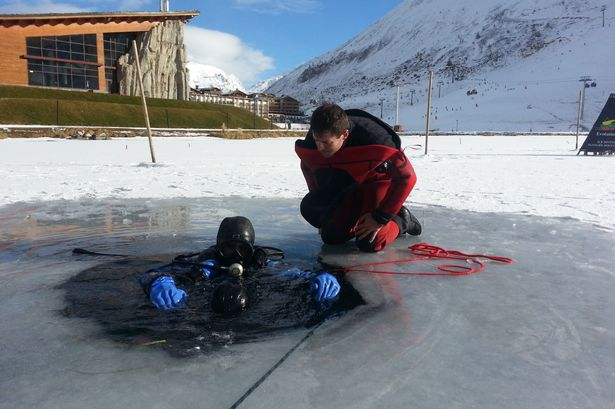
http://www.inthesnow.com 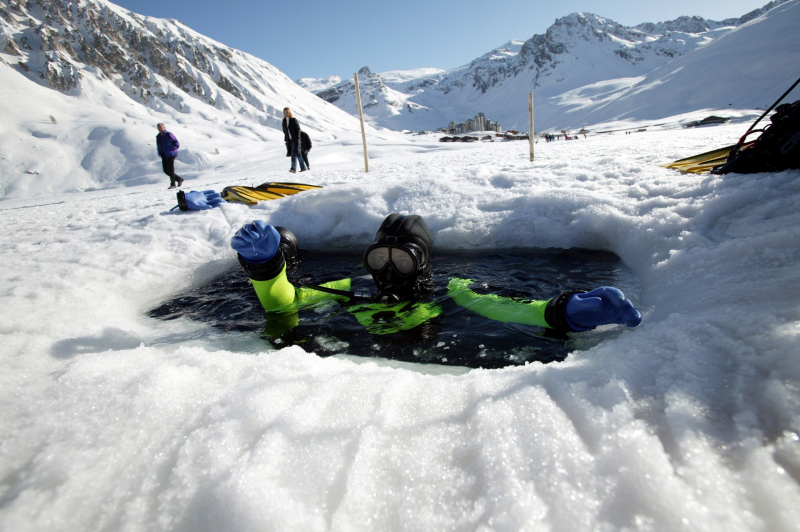
http://www.manchestereveningnews.co.uk -
Cave diving enthusiasts will find it difficult to locate a dive shop in France that specializes in this activity. The region, which includes New Aquitaine, Dordogne, and Lot et Garonne, is ideal for cave diving. This region of south-western France hosts the majority of the greatest diving sites in France for this discipline.
On the surface and underwater, there are various cave systems. The most well-known are adorned with stunning cave art. The water in these caves, carved into the limestone, is crystal clear, allowing excellent visibility for scuba diving. Cave diving experience is required because the density of tunnels, passageways adjustment, tight walls, and dirt on the bottom can make these caverns quite challenging to navigate.
- Location: Lot Et Garonne
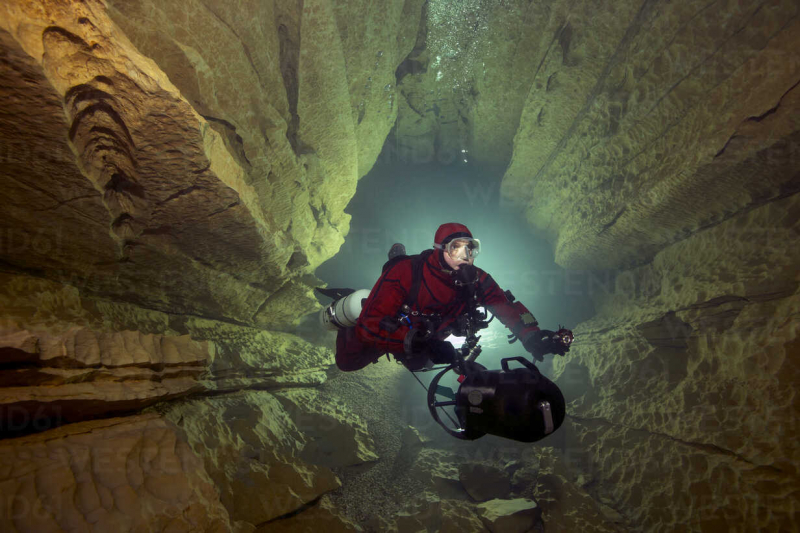
https://www.westend61.de 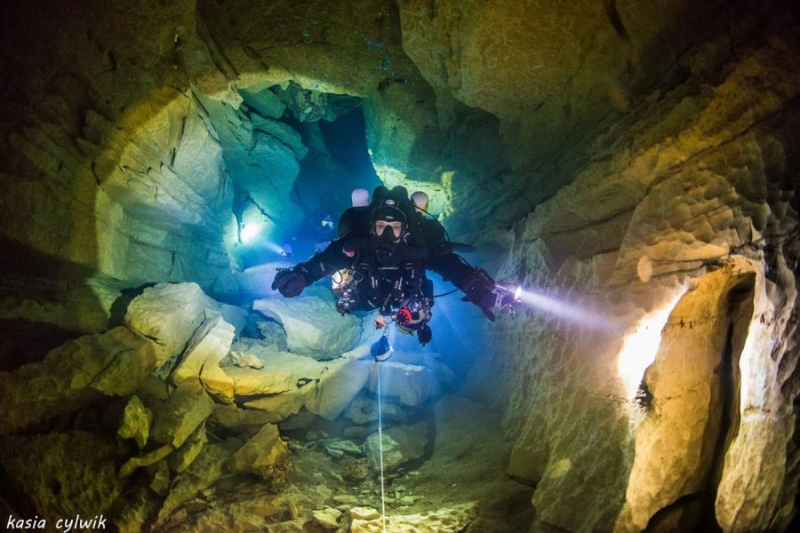
Source: kasiacylwik -
The National Park of the Var or Côte d'Azur, which encompasses the islands of Hyères, part of the island of Porquerolles, the islands of Port-Cros, the island of Bagaud, the Gabinière, and the rock of Rascas, is undoubtedly the most popular marine park among divers looking to dive in France. This reserve serves as a haven for the region's diverse marine species.
It has some of France's top dive locations, with all of the Mediterranean's fauna, such as groupers, bream, moray eels, and scorpion fish, as well as a vibrant flora, primarily consisting of shimmering sea fans clinging to steep walls.
The Port-Cros Park is well-known across the world for harboring some spectacular wrecks, such as the Donator, which is frequently regarded as France's top dive site. This 78-meter freighter sank in 1945. It is located at a depth of approximately 50 meters and attracts thousands of divers each year. Marine life abounds on and around the ship's ruin, which is encrusted with lush soft corals. Other well-known wrecks, such as the Greek, the three masts Togo, and even the submarine Rubis, are worth diving.
- Location: Region of Var
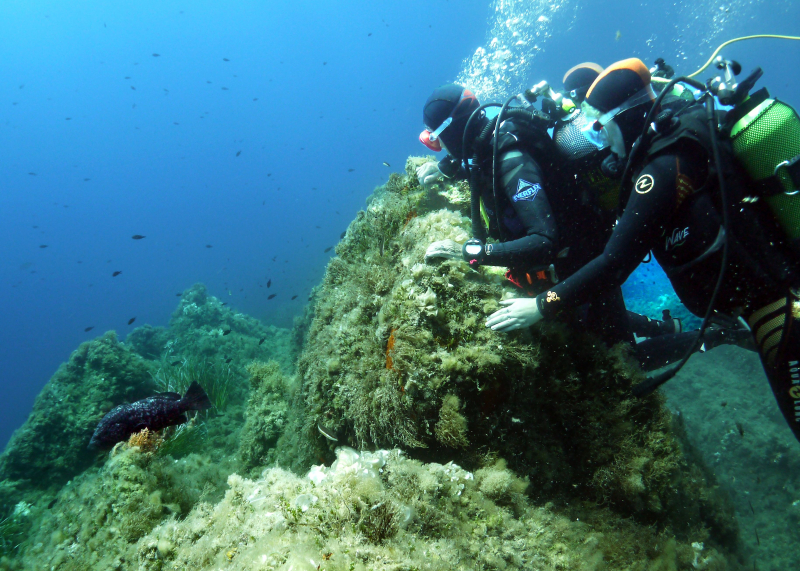
https://www.pinterest.com/ 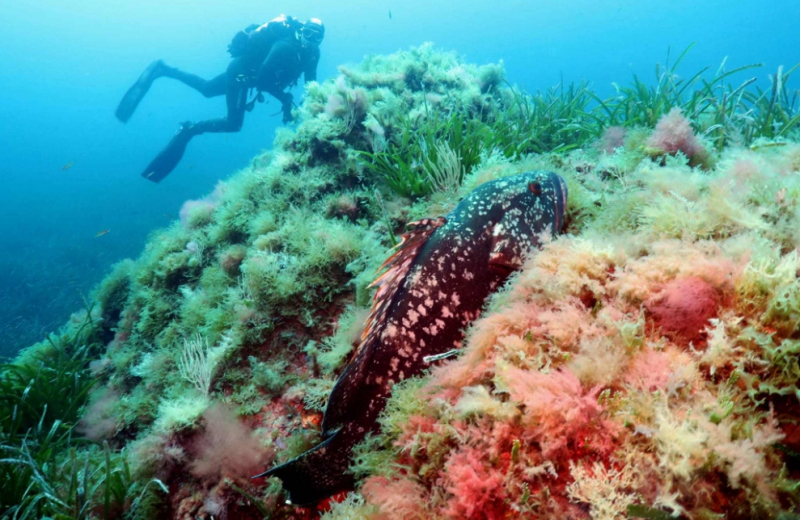
https://worldadventuredivers.com/ -
If you plan to dive in France, be aware that the deserted islands of Mare, Jarron, Jarre, and Riou Plane, as well as a few islets, may be found in a single file off the coast of Marseille. Divers can enjoy a beautiful underwater display of reliefs, high walls, huge wrecks, and luxuriant biodiversity on these group of islands with remarkable natural heritage. Some of the best dive sites in France can be found in this archipelago, such as "The Imperials," a series of drop-offs covered with red gorgonians where pelagic fish such as bass, sea bream, dentex, and barracudas are plentiful.
Don't forget to dive "the Pharillons," a fantastic dive site with a breathtaking 45-meter drop-off behind which you'll find rare and stunning white gorgonians as well as magnificent arches cut into the rock. With its drop-off, swarms of gorgonians, and 30 meter fault, "the big Conglou," which is now partially restricted, is nevertheless a diving paradise in Marseille.
- Location: Provence
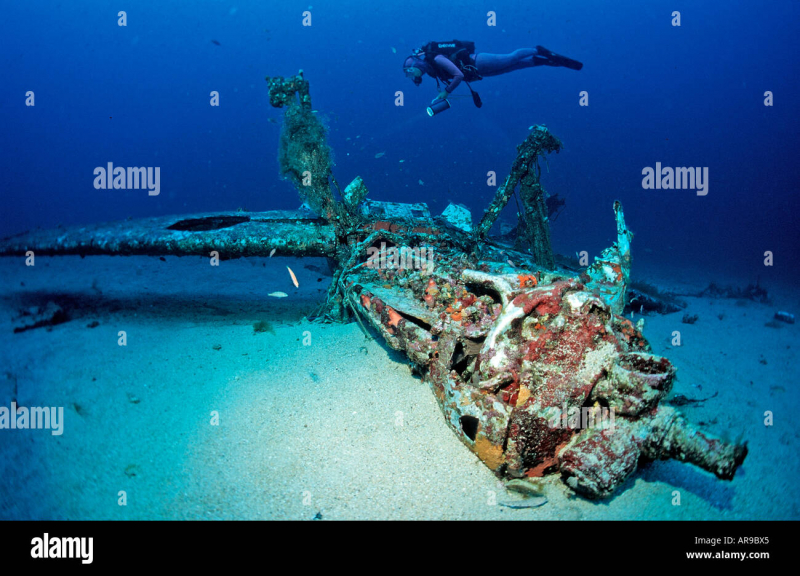
https://www.alamyimages.fr/ 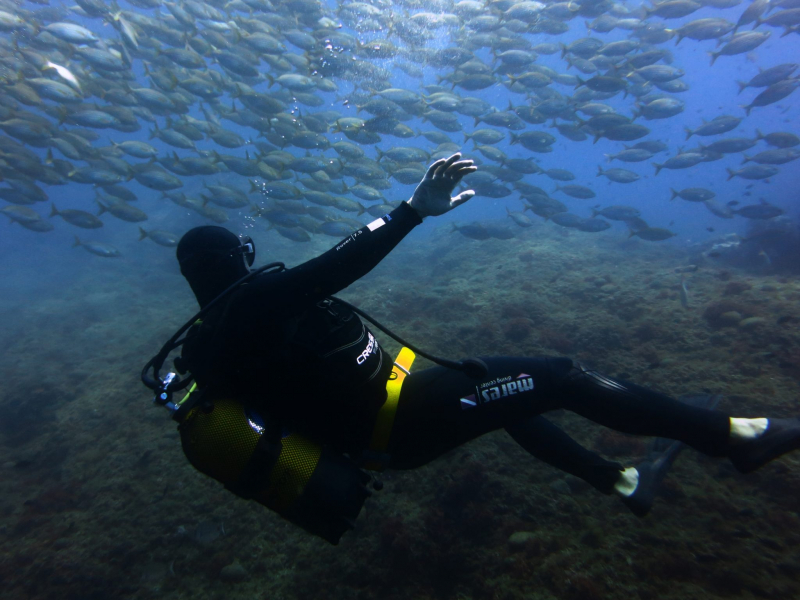
https://worldadventuredivers.com/ -
The Gulf of Porto is an excellent area to dive in France and is located on the western coast of Corsica. The Gulf's distinctive geology has made it a famous tourist attraction in the region. Above and below the water's surface, volcanic or magmatic rocks add to the allure. Red porphyry covers the steep cliffs descending into the depths, creating a magnificent sight.
The protected marine reserve of Scandola, located at the mouth of the Gulf of Porto, was designated as a UNESCO World Heritage Site in 1975. This tranquil sanctuary protects a diverse ecosystem, particularly on the Mucchilina Punta Capo Rosso dive site. Divers that enjoy huge fish will enjoy diving with barracudas, liches, or groupers.
- Location: South of Corsica
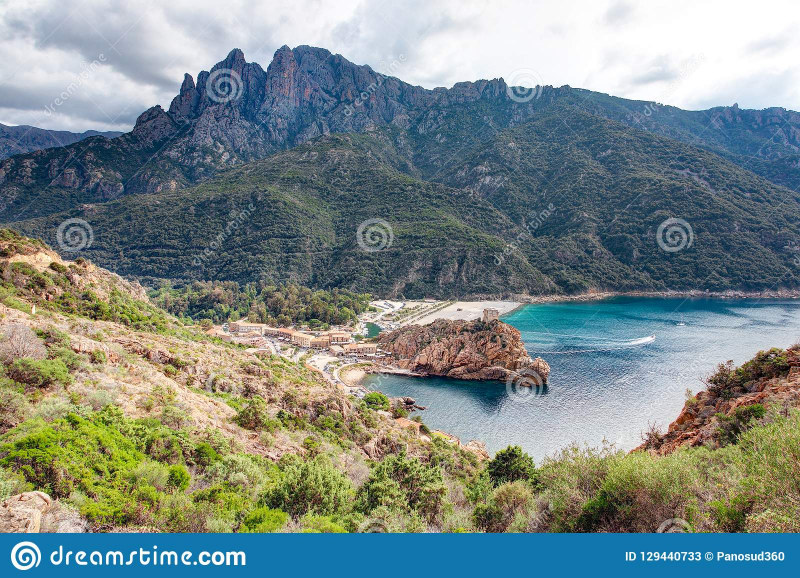
https://www.dreamstime.com/ 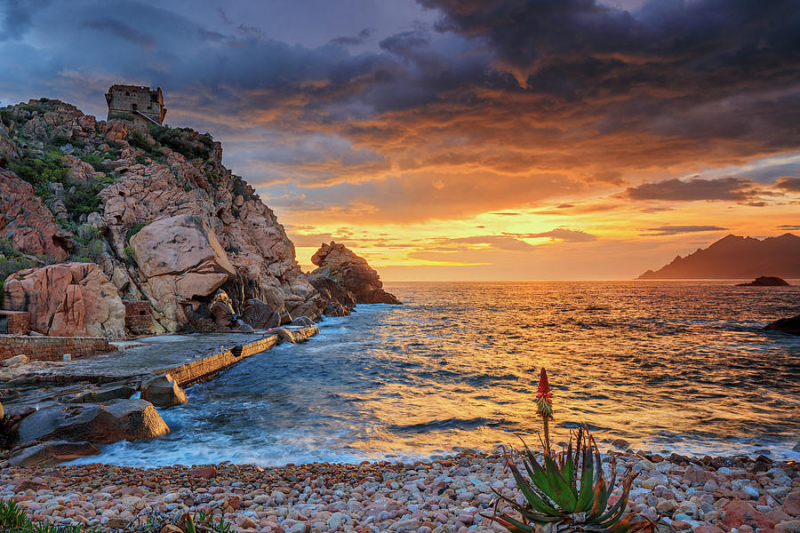
https://pixels.com/ -
The Lavezzi islands are widely regarded as having some of France's most spectacular dive spots. This archipelago of granite islands and reefs is located about 10 kilometers southeast of Bonifacio, in the southernmost tip of mainland France. Because of the numerous reefs in the area, as well as the powerful currents that surge through the Strait of Bonifacio, this archipelago is extremely difficult to reach.
Although diving is feasible at its dive sites, the dive shop recommends morning expeditions when the turquoise sea is quiet and clear. The boulders are layered underwater in a spectacular ballet, while also providing various hiding spots for dusky grouper families.
- Location: South of Corsica

https://www.dreamstime.com/ 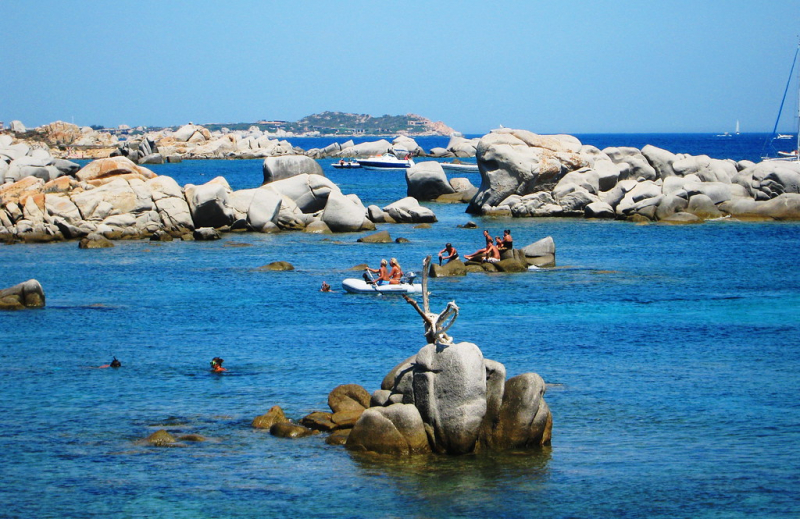
https://www.flickr.com/












